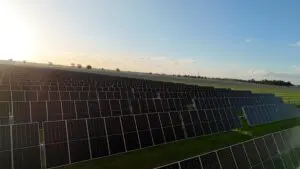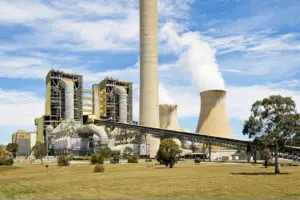
China National Complete Engineering Corporation (CCEC) will work alongside two Chinese solar companies, including GCL-SI, to develop a mammoth PV plant over 1 GW, at the site of the Chernobyl nuclear disaster in Ukraine, which took place 30 years ago.
The announcement of a 1 GW solar project at Chernobyl acts as a symbolic shift in the global energy mix, as the site of one of the greatest energy-related disasters in living memory is now set to become a bastion of PV development in Europe. The mega PV plant will be developed by a collection of Chinese companies, who will not only look to take advantage of the cheap land and existing electric transmission facilities at Chernobyl, but also expand their global outreach in the solar market.
CCEC is set to act as the general contractor for the project, which is set to be over 1 GW, while GCL-SI, a subsidiary of GCL, will perform consulting and planning task, and providing PV technology to the project. Another Chinese company is set to be involved in the project, with construction set to begin sometime in 2017.
“There will be remarkable social benefits and economical ones as we try to renovate the once damaged area with green renewable energy,” commented GCL-SI Chairman, Shu Hua. “We are glad that we are making joint efforts with Ukraine to rebuild the community for the local people.”
A symbolic project
It was 30 years ago that the nuclear plant at Chernobyl, Ukraine, went into meltdown, spitting out highly toxic radiation for 30 kilometers around the site. Earlier in the year, the Ukrainian government announced that it wanted to take advantage of the electricity infrastructure already at the site and develop various renewable energy projects there. And it is the perfect place to highlight the environmental benefits of clean energy initiatives.
In July, pv magazine reported that the Ukrainian government was planning on adding solar to the devastated site, but details were scant, and there was only talk of a 4 MW project from Ukrainian developers. However, a PV plant over 1 GW is a huge step up from there, but with cheap land and existing electrical infrastructure, putting renewable projects on the site seems like a no-brainer.
“Its cheap land and abundant sunlight constitute a solid foundation for the project,” commented Ukraine’s Minister of Environmental and Natural Resources, Ostap Semerak, last month. “In addition, the remaining electric transmission facilities are ready for reuse.”
“A PV plant is probably a very sensible use of the land since it requires little human presence,” added Bloomberg New Energy Finance lead solar analyst Jenny Chase when speaking with pv magazine. However, Chase also pointed out that there was no mention of an agreement from any Ukrainian authority or utility to purchase the power, which suggests the Chinese consortium may still have some work to go before it could or would start developing the project.
Provided that the project does go ahead, and the Chinese consortium are responsible for tis development, it will act as the perfect opportunity for GCL to spread to global reach, and develop landmark projects in new markets. “We have been dedicated to providing integrated solar services and will take diverse approaches this year to drive penetration and achieve presence,” added Shu.
Source: PV Magazine. Reproduced with permission.










